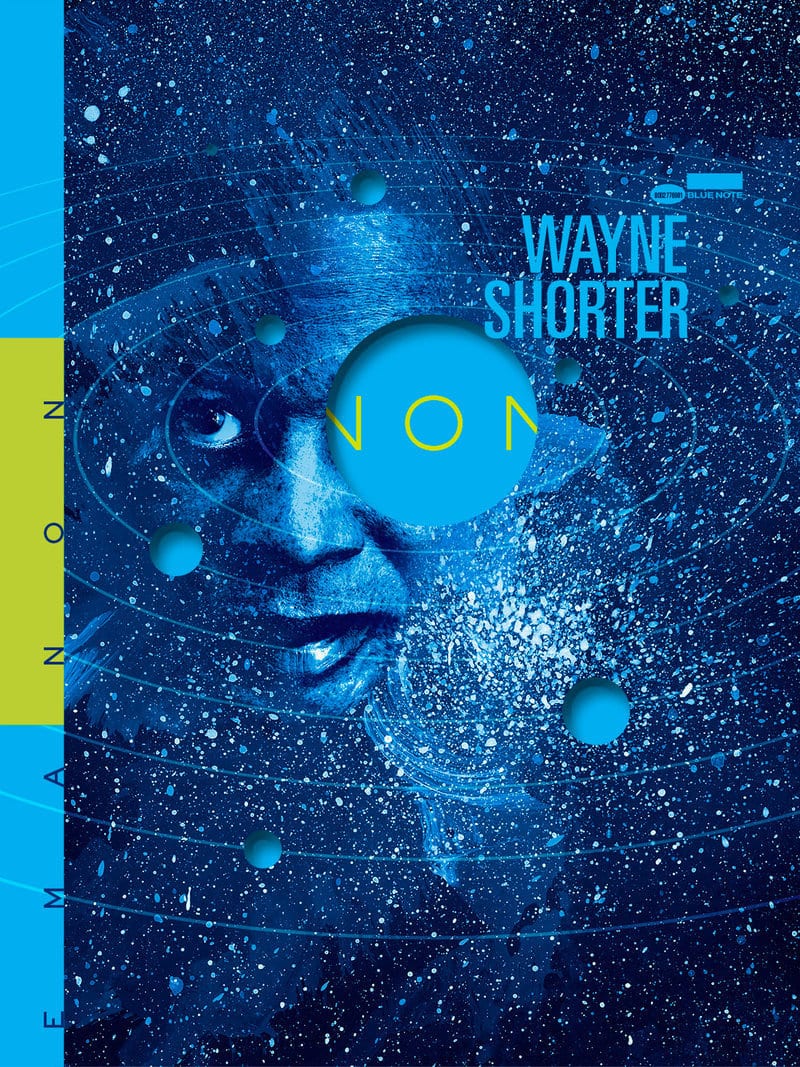
Wayne Shorter is back at it. He’s learning how to stretch out all over again.
The turn of the century was a dry time for the saxophone legend, at least on the recording front. Shorter released only two albums in the ’90s; one was a duet recording with Herbie Hancock. The following decade wasn’t that much more impressive, with two live albums and one studio album that did little to creatively advance Shorter’s long career or jazz music in general. It took 12 years for him to make his next move with the 2013 Blue Note release Without a Net. It was around this time when I had expected Shorter would wile away his golden years by playing the same sort of post-bop that he was tooting while earning paychecks from Miles Davis half a lifetime ago.
Despite this meager activity, people continued to proclaim him as the Greatest Living Jazz Composer because 1) he wrote “Footprints”, and 2) he was still alive. News that Shorter had teamed up with a graphic artist and a chamber orchestra for the release of his triple album Emanon caught my attention but did not raise my expectations. We can’t go handing great reviews to Wayne Shorter just because he’s Wayne Shorter; he has to prove that he can deliver the goods all over again. With Emanon, he has.
Shorter, who has been a long time fan of comic books, reached out to artist Randy DuBurke and writer Monica Sly to create a sci-fi story to accompany this adventurous new music he had been developing. Emanon‘s first disc features four lengthy compositions performed by the Orpheus Chamber Orchestra alongside Shorter’s quartet featuring Danilo Perez on piano, John Patitucci on bass, and Brian Blade on drums. The second and third discs are live recordings of the same quartet playing variations of the Emanon material alongside some other selections. The combined length of these two CDs is 76 minutes, meaning that Emanon could have been released as a double album, but a triple album looks far more impressive. Packaged with the Emanon graphic novel means that this thing is destined to become a collector’s item. As of this writing, there isn’t even any plan for a digital release of the music. Talk about your throwbacks!
Musically, Emanon (“No Name”backward and the title of a Dizzy Gillespie song, in case you were wondering) isn’t exactly the third-stream breakout that will blaze new paths in the forest, but it’s still a very good listen. The 34-piece orchestra pulls double-duty by being a primary vehicle for the music while giving it extensive shading for those moments when things are more focused on the quartet, Danilo Perez’s elegiac passages in particular. The nature of the music itself is highly dramatic, kicking forth enough flair to keep a hero’s cape forever billowing in the wind as they stand on top of their victorious wreckage.
Once you are beyond the initial surprise of Wayne Shorter combining jazz and classical so easily, Emanon‘s four anchor pieces become less of a shock. “Pegasus” clears the way, “Prometheus Unbound” and “Lotus” peruse the valleys and caves, and “The Three Marias” combine traits from all three. The live rendition of “The Three Marias” takes even more liberties with Perez doing a great deal of the musical stretching over the course of 27-plus minutes. The one break in the sci-fi third-stream action is “She Moves Through the Fair”, splitting the difference between Emanon‘s current ambitions and tried-and-true post-bop.
The graphic novel follows a protagonist soldier named Emanon who fights bad guys. And he does so by hopping dimensions… I think. DuBurke’s artwork is very hazy in nature, not so clearly defined by hard lines and deep colors. Instead, everything is dreamlike yet still bright. The final pages impart this text: “As a consequence: Everyone was destined to wrestle with direct circumstances until they realize that the means to becoming the producer, director, and actor in the story of ones [sic] life lies within one’s self-potential. The task at hand is to find a way to unlock the inherent storehouse of one’s life which contains the knowledge, wisdom and will to take action with… the courage of a Pegasus!” This is only slightly less turgid than Esperanza Spalding‘s bloated introduction, which proclaims that “in our hustle from one task to the next, the subtle waves emanating from these unseen dimensions rarely penetrate our perception.” That’s one of her least insufferable sentences, believe it or not.
If Emanon were slimmed down to just its first CD and no graphic novel, it would still be a welcome addition to Wayne Shorter’s discography. And if you don’t mind mixing metaphors, the two live CDs are gravy, and the graphic novel itself is a fifth wheel. Not to put down the abilities of Monica Sly and Randy DuBurke, it just feels like neither the comic nor the music is some uncanny match for one another. As usual, it’s all in the eye and the ear of the beholder. This particular beholder just doesn’t grasp the link between the two. But that’s alright because the music of Emanon is enchanting all on its own. Wayne Shorter’s best album? Probably not. But one of Wayne Shorter’s more interesting late-career diversions? Definitely yes.

